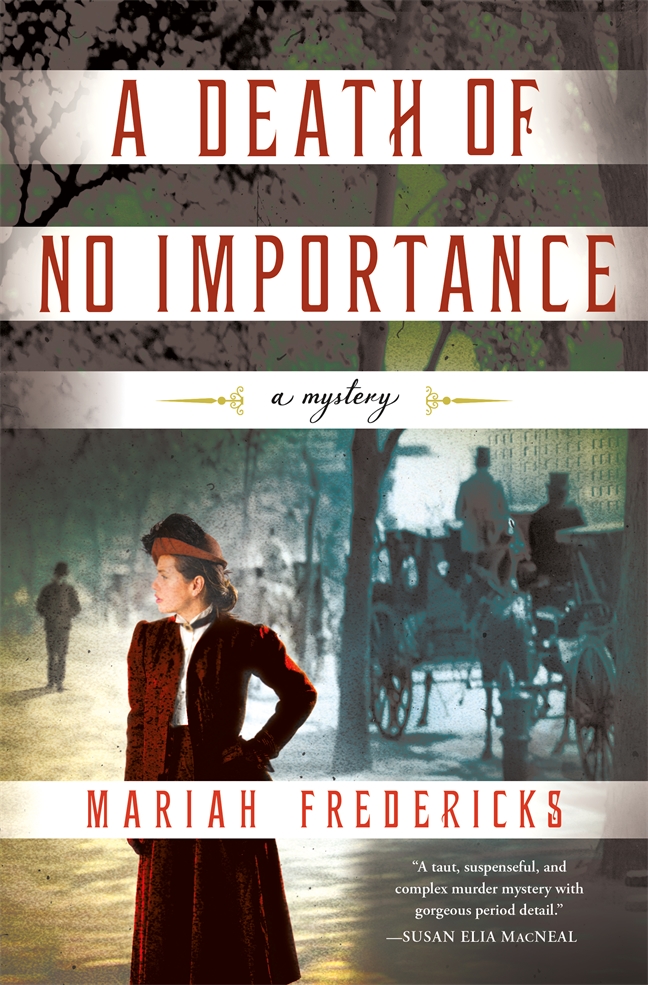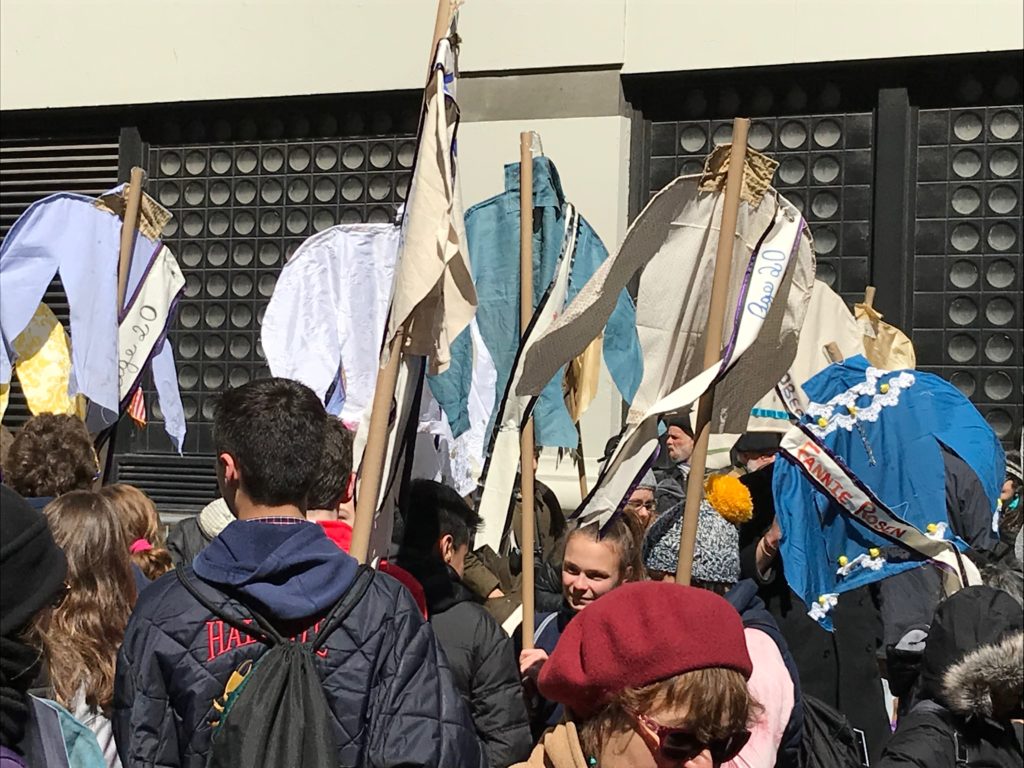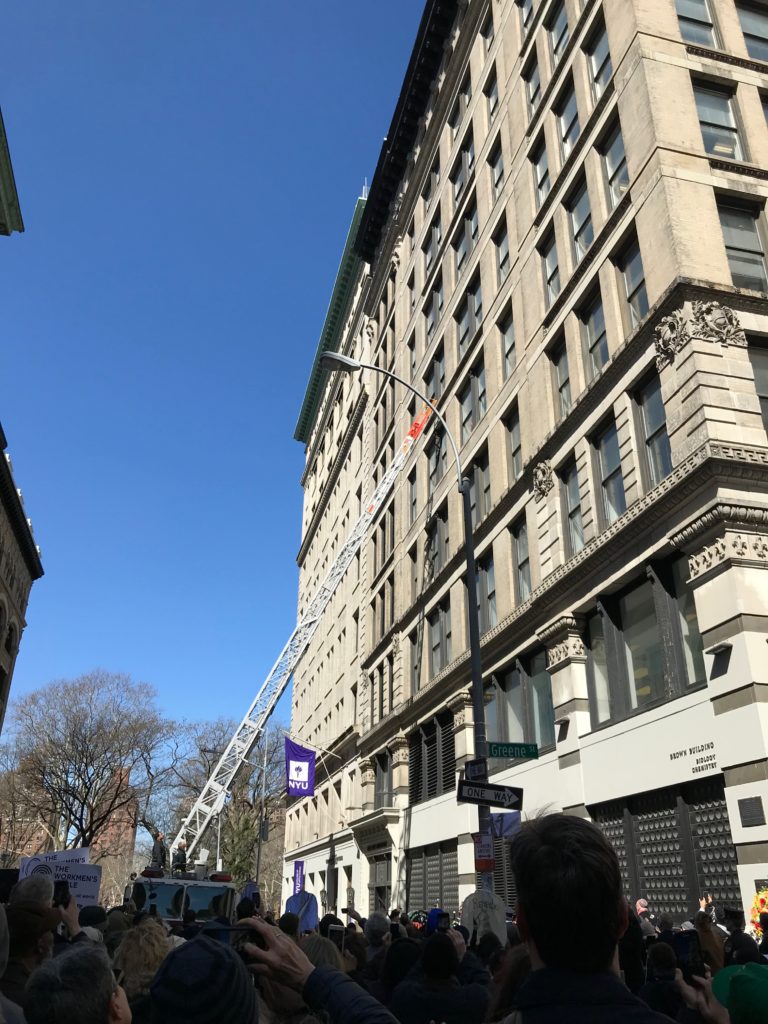by Mariah Fredericks
One of my favorite books as a kid was an illustrated chronicle of famous disasters. Pompeii, Titanic, the Chicago Fire. I loved that book. I wore it out. The spine was cracked; the pages came loose. I put them back in, mixing the Hindenburg with the Black Death. One of the last events in the book was the Triangle Shirtwaist Factory Fire. That event always felt different to me. The fire happened in New York, about four miles from my house. The majority of those who died were young women only a little older than I was. They weren’t glamorous like the Titanic victims. No Hollywood star has ever portrayed them. They were just going to work. For 12 hours a day.
 And on March 25, 1911, they died in the worst workplace disaster in the city’s history. The New York Times wrote, “Scores of working girls were hemmed in aisles formed by wooden sewing machines and filled with flimsy materials. More than fifty jumped from a window to be picked up either dead or fearfully injured. Many others were literally roasted to death.”
And on March 25, 1911, they died in the worst workplace disaster in the city’s history. The New York Times wrote, “Scores of working girls were hemmed in aisles formed by wooden sewing machines and filled with flimsy materials. More than fifty jumped from a window to be picked up either dead or fearfully injured. Many others were literally roasted to death.”
“Shirtwaist kings” Max Blanck and Isaac Harris had refused to allow a union or to improve working conditions. One elevator out of the four worked, and it could only take 12 people at a time. One door to the outside was locked to prevent theft, and the other opened in. The indoor fire hose was rotted, the valve rusted shut.
The idea for A Death of No Importance came to me when the first line, “I will tell it,” popped into my head. I didn’t know who the “I” was and I didn’t know what she had to say. But she kept coming back, and over time I figured out it was a she, not rich, probably a servant—someone not used to being heard. Her language was somewhat formal, what I might call old-fashioned. She had to be a New Yorker because I’m a New Yorker. Not modern… but on the brink of modernity. Which brought me to slightly before the outbreak of World War I—and the Triangle Shirtwaist Fire.
The book is called A Death of No Importance because as a society, certain deaths loom large and some seem to matter not at all. You could argue that the lives of the Triangle workers did not matter much to their employers; their deaths actually wound up as a profit once the insurance came in. But in the wake of the tragedy, new laws regarding building safety and workers’ conditions were passed—and actually enforced. The deaths of these women and men have mattered enormously to workers who came after them.

Banners representing the workers who lost their lives in the Triangle Shirtwaist Factory Fire in 1911.
On March 23, I went to a ceremony organized by the Remember the Triangle Fire Coalition. It is held every year at the foot of the Asch Building—now the Brown Building—where the workers died. A crowd of a few hundred people was gathered, many carrying banners in the shape of shirtwaists, each bearing the name and age of a Triangle victim. Fannie Hollander, 18. Annie Starr, 30. Esther Hochfeld, 21. In some cases, the banners were carried by a descendant of Triangle workers.
The ceremony kicked off with rousing songs from the New York City Labor Chorus. Ladder 20 of the New York Fire Department raised its ladder to the 6th floor of the building. In 1911, fire ladders could only reach the 6th floor, so they were unable to reach the fire on the 8th, 9th, and 10th floors. The chasm between the workers and rescue was made horrifically clear. Just the night before the rally, FDNY Lieutenant Michael Davidson had lost his life fighting a fire in Harlem.

In 1911, fire ladders could only reach the 6th floor, so they were unable to reach the fire on the 8th, 9th, and 10th floors of the factory.
White and red carnations were laid at the base of the building as the names were read aloud. That weekend, people were due to march for gun safety laws and the Parkland students were very much on people’s minds, as speaker after speaker pressed the need for laws that would ensure that people could go to work—or school—and return home safe.
Plans for a permanent memorial to the Triangle workers are underway. In a city that has erected statues to Teddy Roosevelt, George M. Cohan, and Sir Walter Scott, it seems more than fitting that we remember the 146 workers whose deaths gave us so many of the labor protections we take for granted today.
MARIAH FREDERICKS was born and raised in New York City, where she still lives with her family. She is the author of several YA novels. A Death of No Importance is her first adult novel.
The post The History Behind the Mystery: A Death of No Importance appeared first on The History Reader.
Powered by WPeMatico